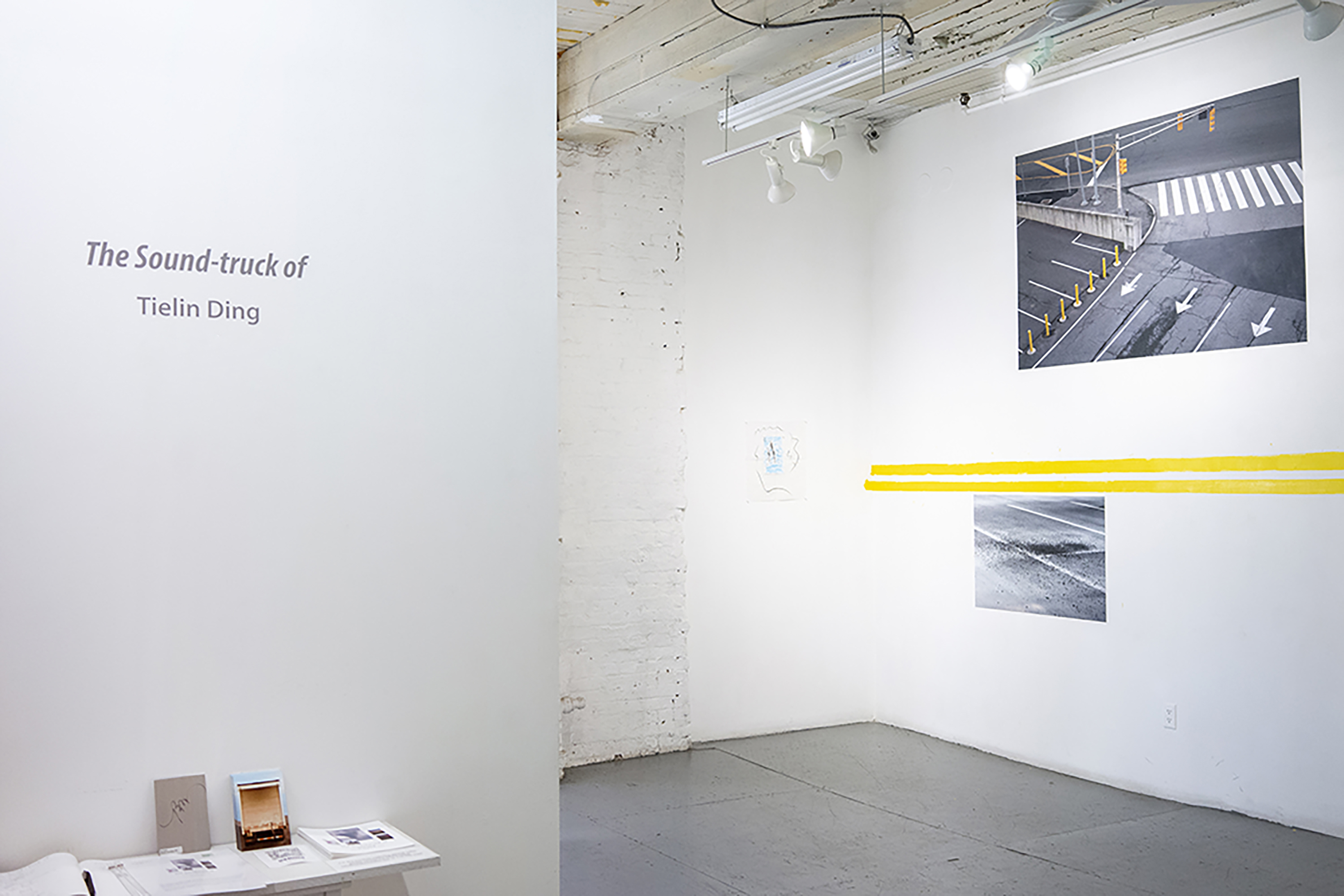
pigment print, oil pastel, scratches


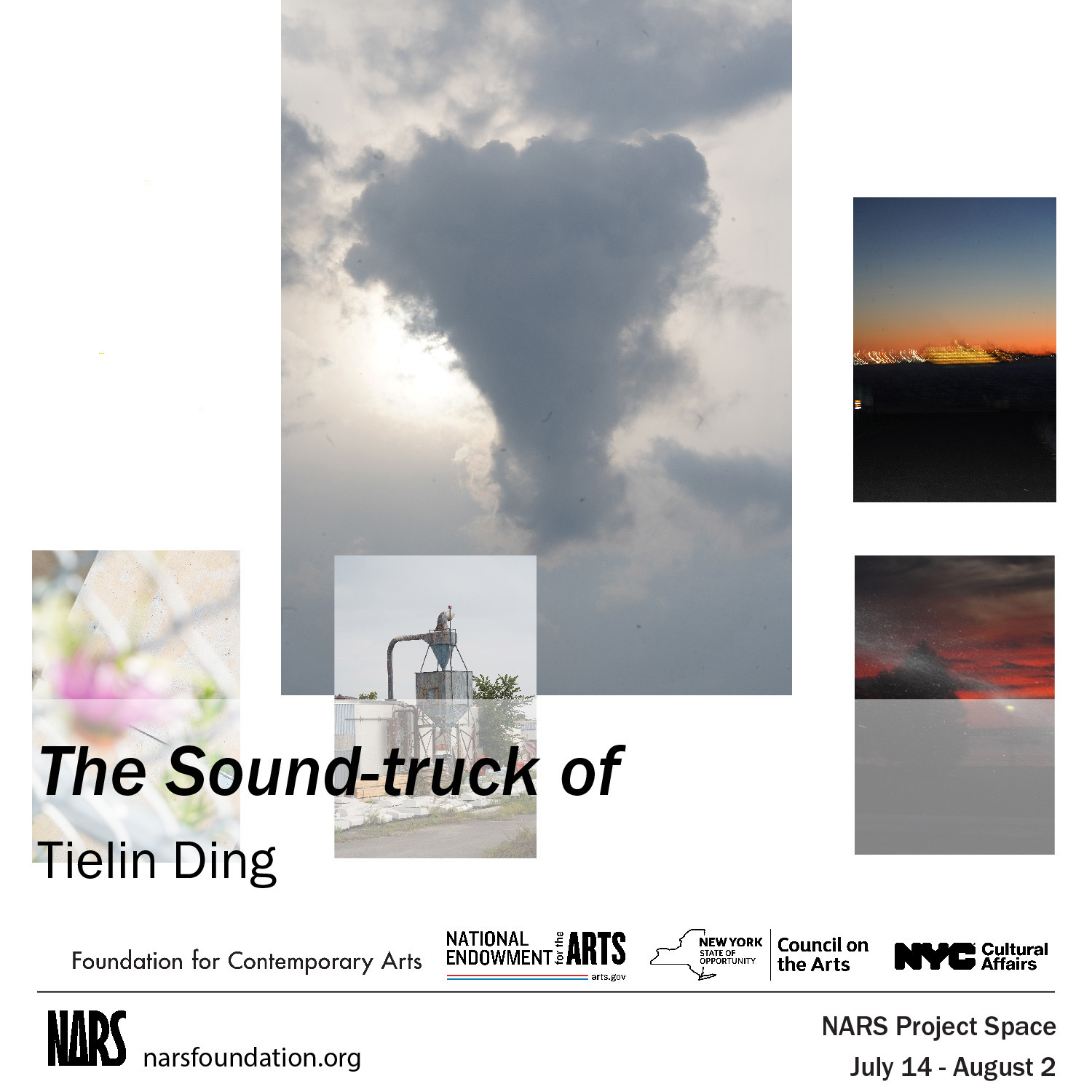

John Cage asked in 1958 "when a truck is passing by a music school or a factory, which is more musical"? I have been thinking about the moving truck signifying as a wandering heart, a risking mind and an international citizen who is always thinking of where to go and which direction to go.
A truck is a carrier, a vehicle of transportation and transformation, with the truck's aluminum surface reflecting sunrise, sunset, traffic lights and car lights while the wheels are always in motion. Along the journey, the truck keeps changing the color and light of its surface.
In this solo presentation, the artist is sharing a site of construc(k)tion with photo-based installation including a design element of yellow, which is a color that has been penetrating through in his previous practices, suggesting a sense of both continuation and separation, just like the yellow line in the middle of the road.
The truck is on stage, under spotlight. The truck printed in body-scale is the first image you will see when you enter the gallery space. Next to the butt of the truck, there is a ‘TURNTABLE’ lying there in stillness. Floating above the yellow lines painted unevenly with latex paint, there is a white shirt insisting installing on the wall with yellow pushpins. It writes ‘EASTURN’ and ‘WESTURN’ on the back of the shirt paired with the image of sunset and sunrise.
In this presentation, I hope the works surrounding ‘The Truck’ also carry the energy/atmosphere of ‘The Truck’, every pigment/pixel of it. The surrounding works include a drawing titled as ‘wind-shield wiper inside the mind’ and a mixed-media work ‘keys are moving, they generate moving keys’, six other photographs including urbanscape with yellow traffic lights, spreading gravels and sand in the parking lot, a cone-shape cloud floating above an abandoned concrete mixer next to a blurrrry ferrrrry, trespassing coneflower and ‘trees, road-lights and water-fall’.
If to make a floating frame, I think I will give it to ‘The TURNTABLE’ which brings it more volume to activate/vibrate the surfaces mapped in this space, from the butt of ‘The Truck’. I looked up the word ‘TURNTABLE’ in the dictionary, it shows up as following:
a: a rotating platform that carries a phonograph record
b: a platform with a track for turning wheeled vehicles (such as locomotives)
C: LAZY SUSAN common in Chinese restaurant
checklist
Matches of Matches, 2021, diemension variable
pigment print
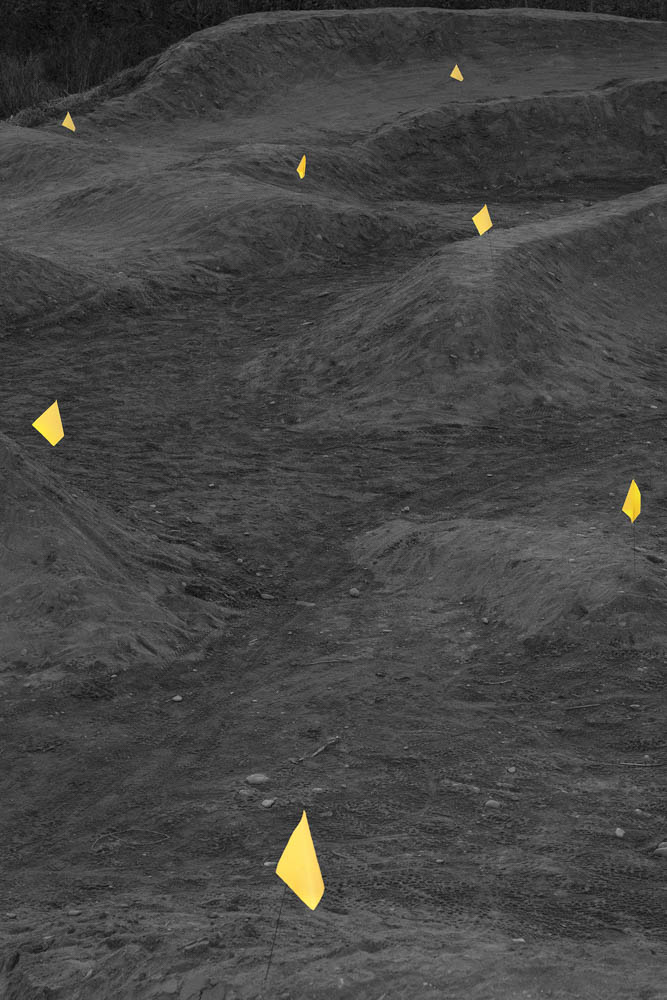
Into the Wild, 2021, diemension variable
pigment print
pigment print
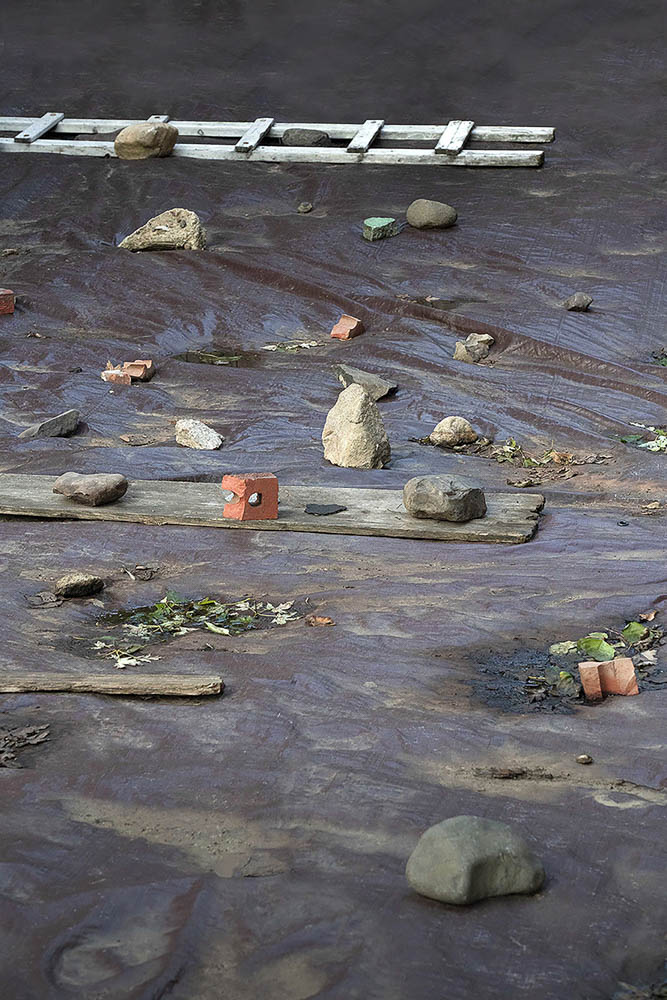 Backyard Stonehenge, 2021, diemension variable
Backyard Stonehenge, 2021, diemension variablepigment print
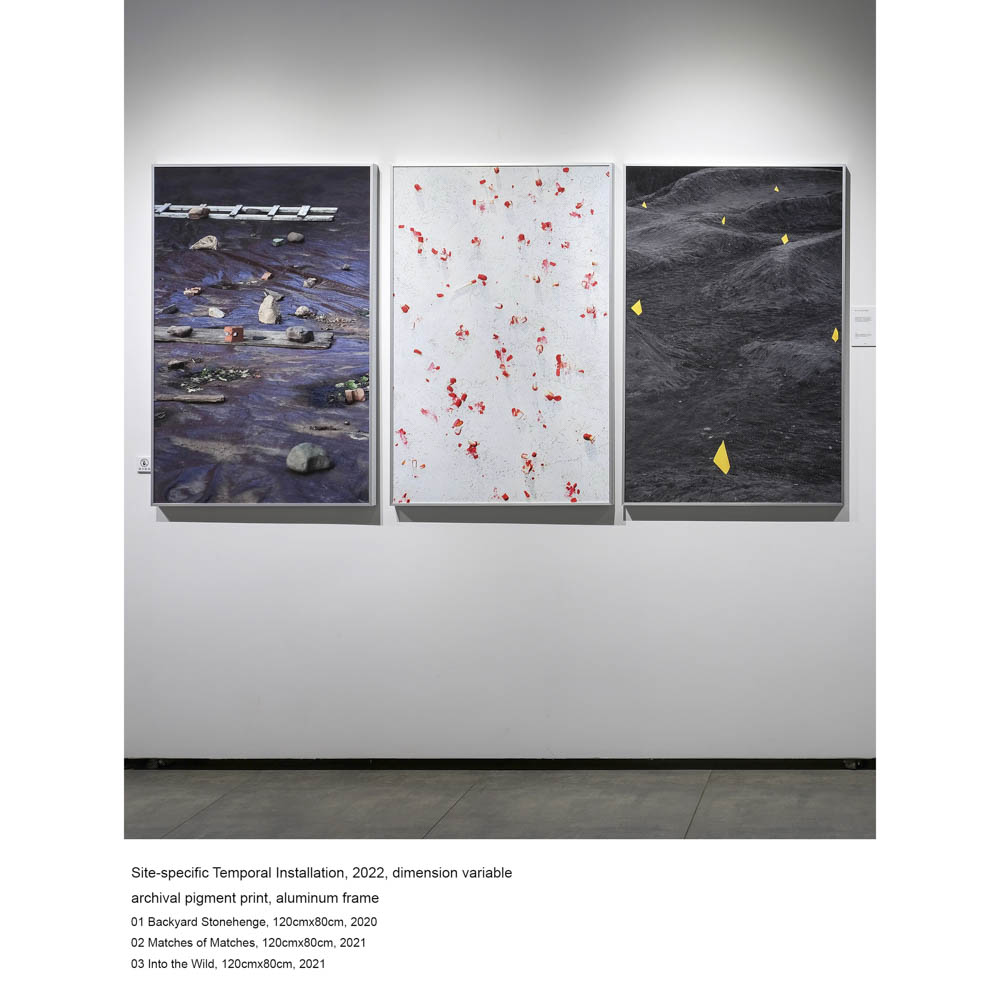
Under the practice of aimless wandering in my daily life, I am interested in capturing and collecting found objects and materials in different size, shape, weight and volume, posing and composing them under different outdoor environment. In these three photographs, which I also consider as documentations of site specific temporal installation, stones, matches and flags are trying to find their own unique forms, compositions and states of being.


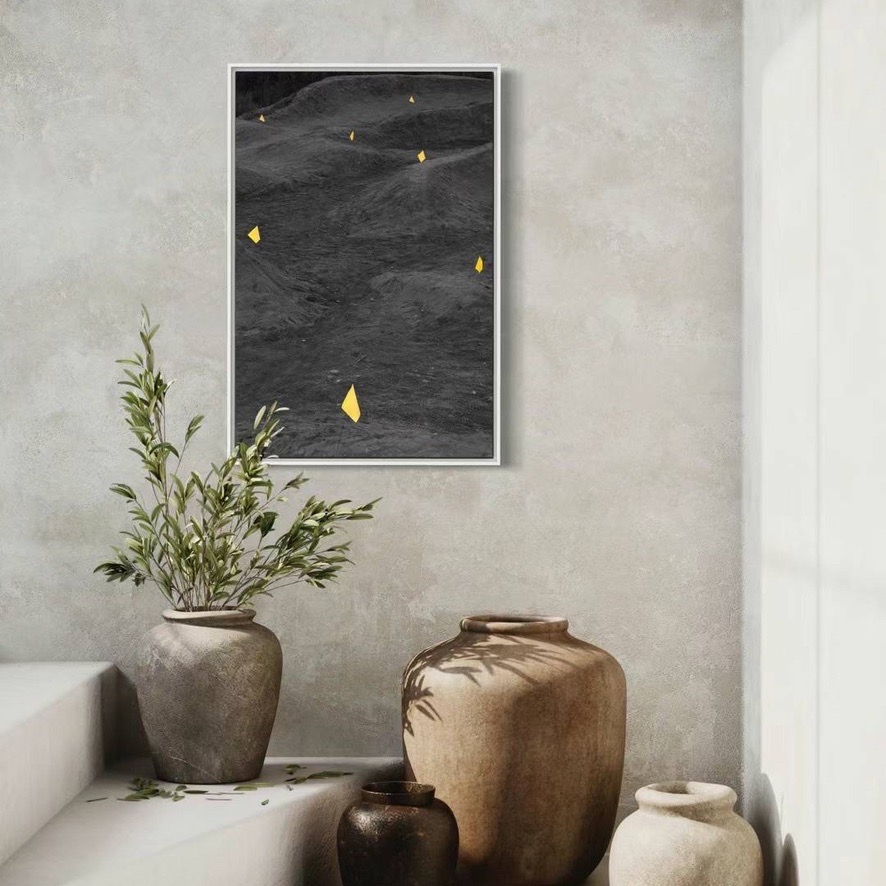





mock-up @theeyeseesmore in France
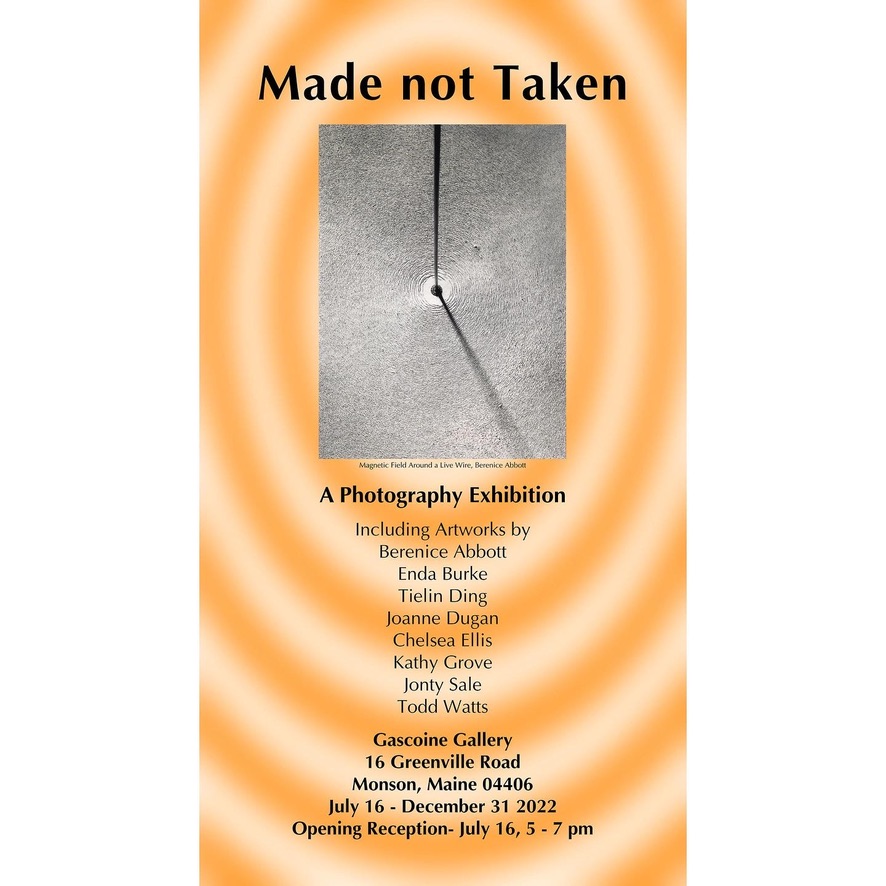
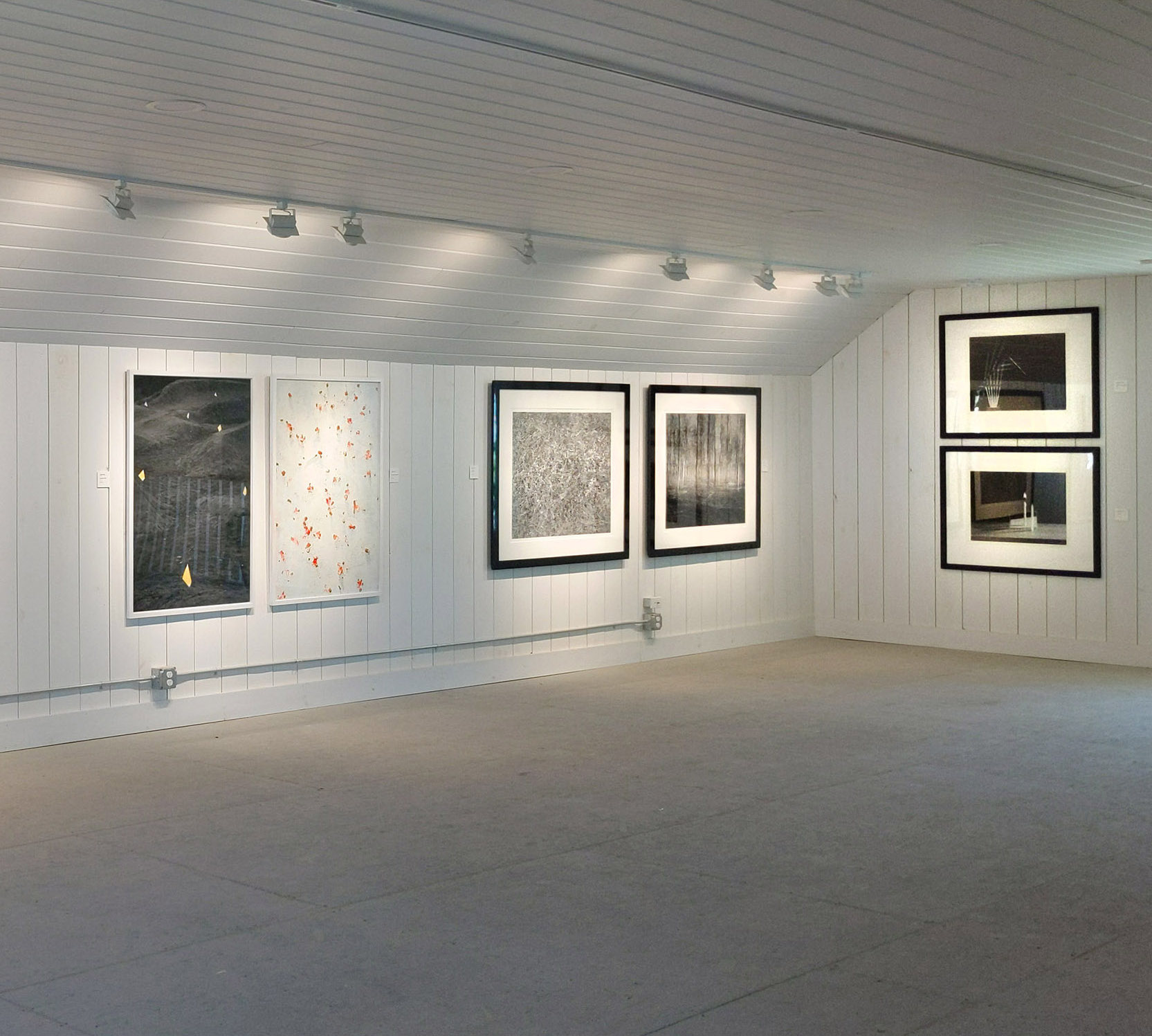 courtesy of Abbott Watts Residency, special thanks to Todd Watts
courtesy of Abbott Watts Residency, special thanks to Todd Watts

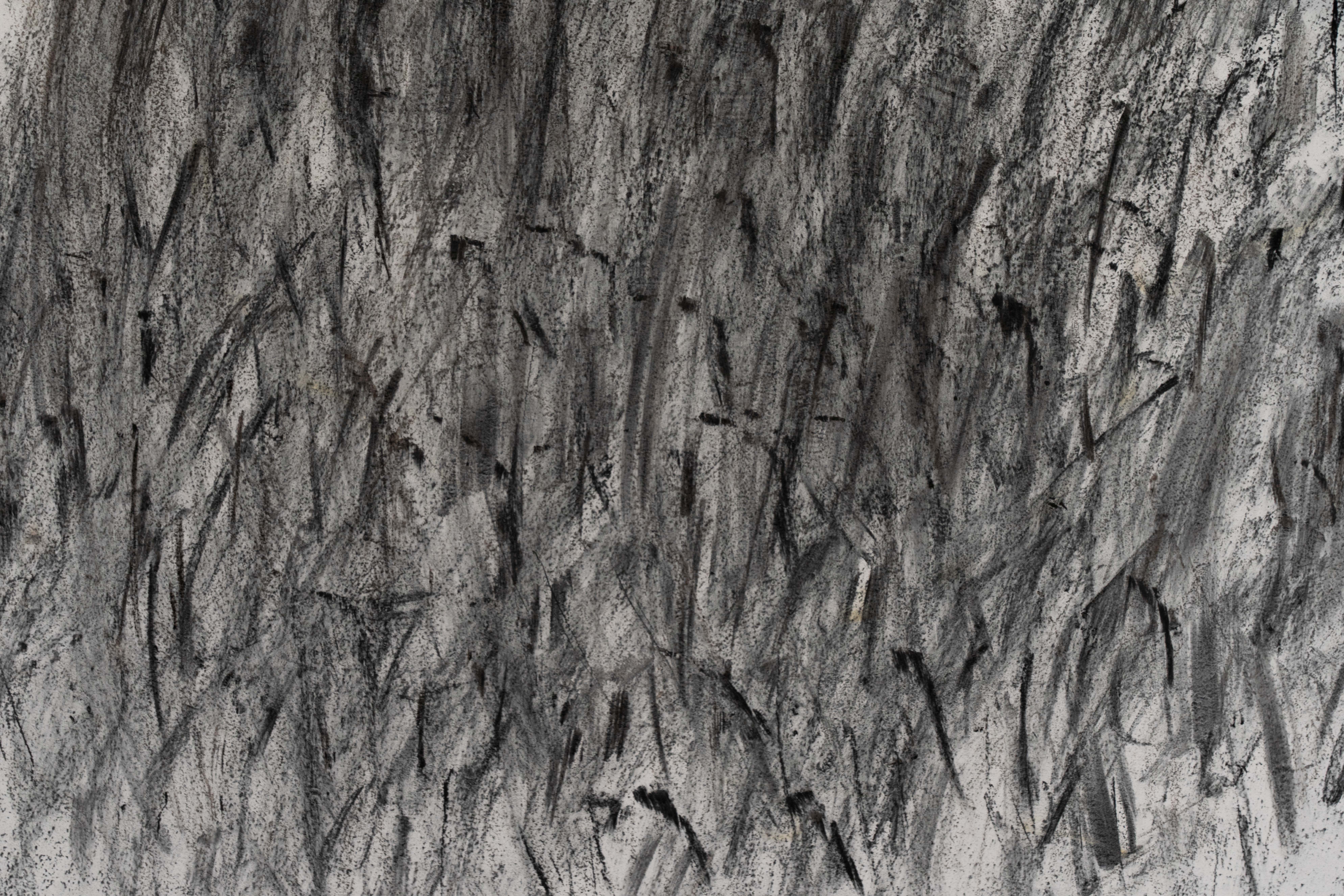


 Grass, Mountain and Traffic Cone
Grass, Mountain and Traffic Cone 2021
burned branches, nails
A mathematical problem from my primary school, “What is the shortest distance when an ant walks from A to B on a cone?” ha been lingering around my mind for a long time along with my observation of traffic cones when I am wandering around in New York city. The shortest distance from A to B is the length of straight line, though it is an irregular curve on a cone. I am interested in the gesture of unfolding when we solve this mathematical problem. It is not unlike people’s collective experiences when they walk across a lawn in a park and form “desire path,” which is shaped by convenience and efficiency.
Traffic cones also contain a sense of construction and deconstruction, carrying the meaning of policing to mark the boundary in public space suggesting where to go and where not to go. Thinking about the relationship between our bodies and traffic cones while countlessly passing by the signage “No Trespassing” , I started to make some mark-drawings with natural materials such as burned branches inspired by mono-ha movement happened in 1960s’ in Tokyo. I am interested in the forces and body movements activated on the burned branche when I was drawing on the wall, which creates different patterns and forms along with different states of being as branches in a spread-out space. Followed by the gesture of gravitational shift with branches, I am intrigued by the process of falling down and spreading out when the branches were hit against the wall. The image of the installation as a whole is like a decaying mountain with a marked trail inside. What was left on the floor are some small parts of the branches, some are powders, some are ashes. I got reminded of what a great poet Juyi Bai from Tang Dynasty wrote, “Lush, lush grass on the plain; Once every year it sears and grows. The wildfire tries to destroy it in vain; When the verna breeze blows, it comes to life again.” (Translated by Zheng Yu, Huazhan Feng)
Traffic cones also contain a sense of construction and deconstruction, carrying the meaning of policing to mark the boundary in public space suggesting where to go and where not to go. Thinking about the relationship between our bodies and traffic cones while countlessly passing by the signage “No Trespassing” , I started to make some mark-drawings with natural materials such as burned branches inspired by mono-ha movement happened in 1960s’ in Tokyo. I am interested in the forces and body movements activated on the burned branche when I was drawing on the wall, which creates different patterns and forms along with different states of being as branches in a spread-out space. Followed by the gesture of gravitational shift with branches, I am intrigued by the process of falling down and spreading out when the branches were hit against the wall. The image of the installation as a whole is like a decaying mountain with a marked trail inside. What was left on the floor are some small parts of the branches, some are powders, some are ashes. I got reminded of what a great poet Juyi Bai from Tang Dynasty wrote, “Lush, lush grass on the plain; Once every year it sears and grows. The wildfire tries to destroy it in vain; When the verna breeze blows, it comes to life again.” (Translated by Zheng Yu, Huazhan Feng)
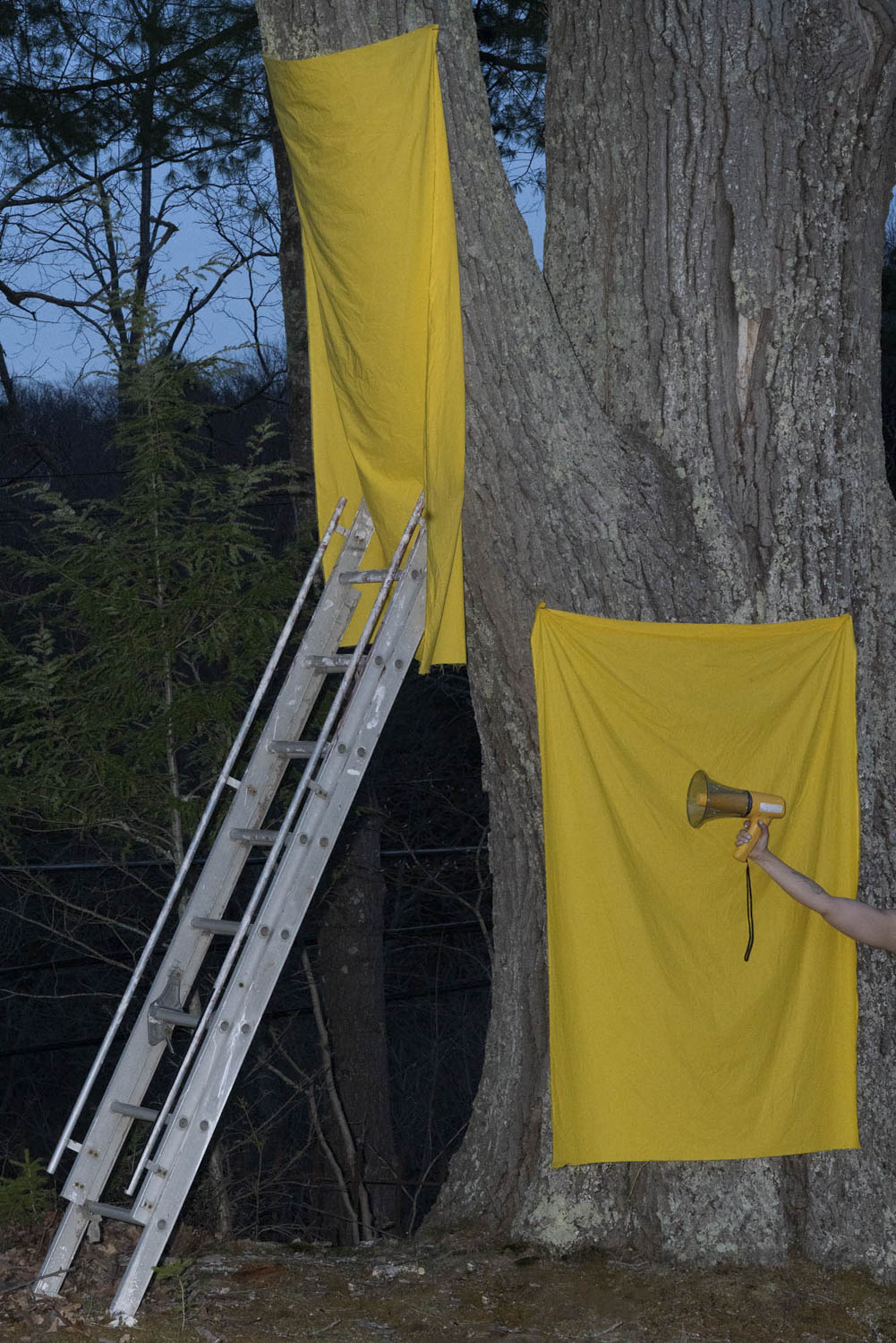
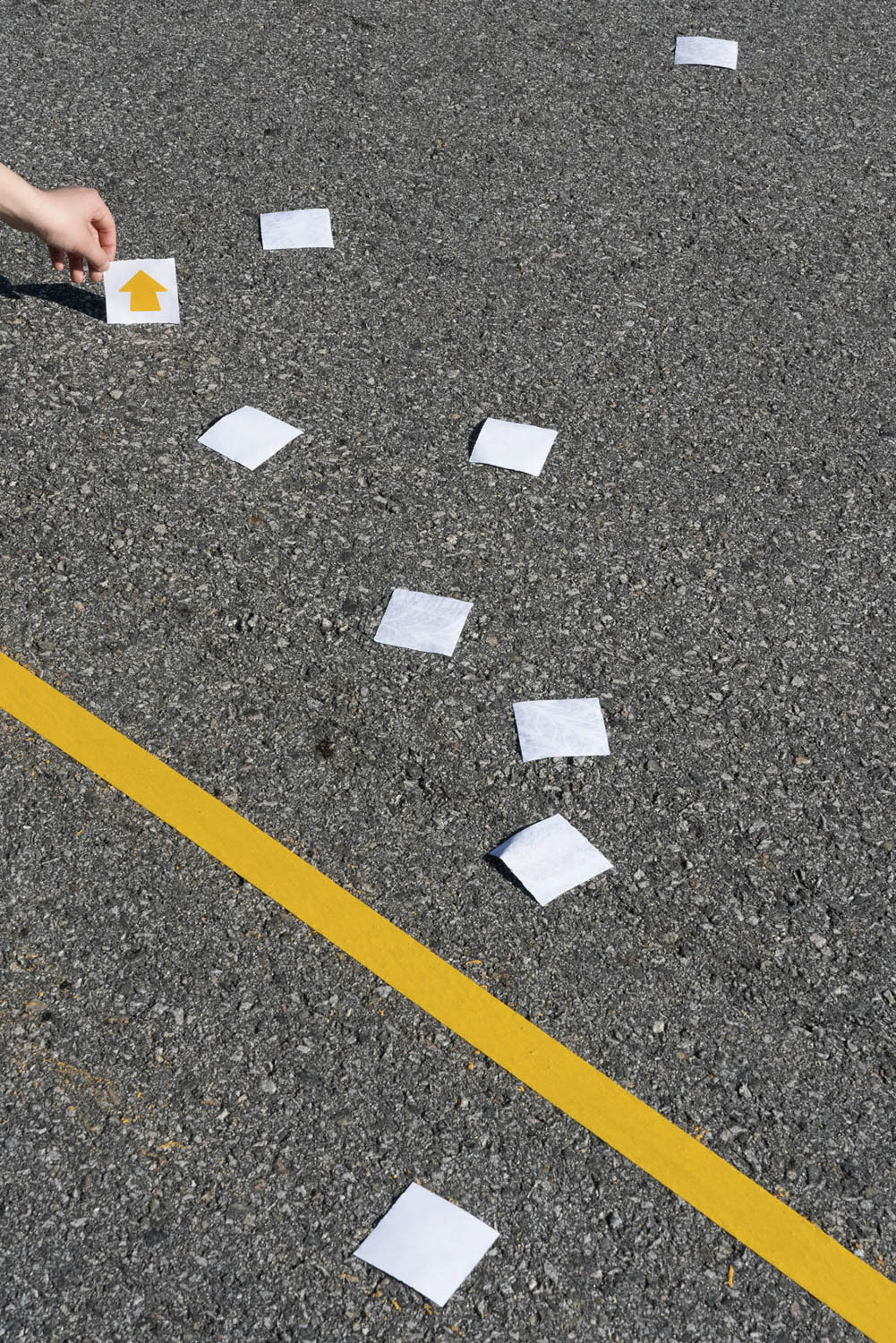


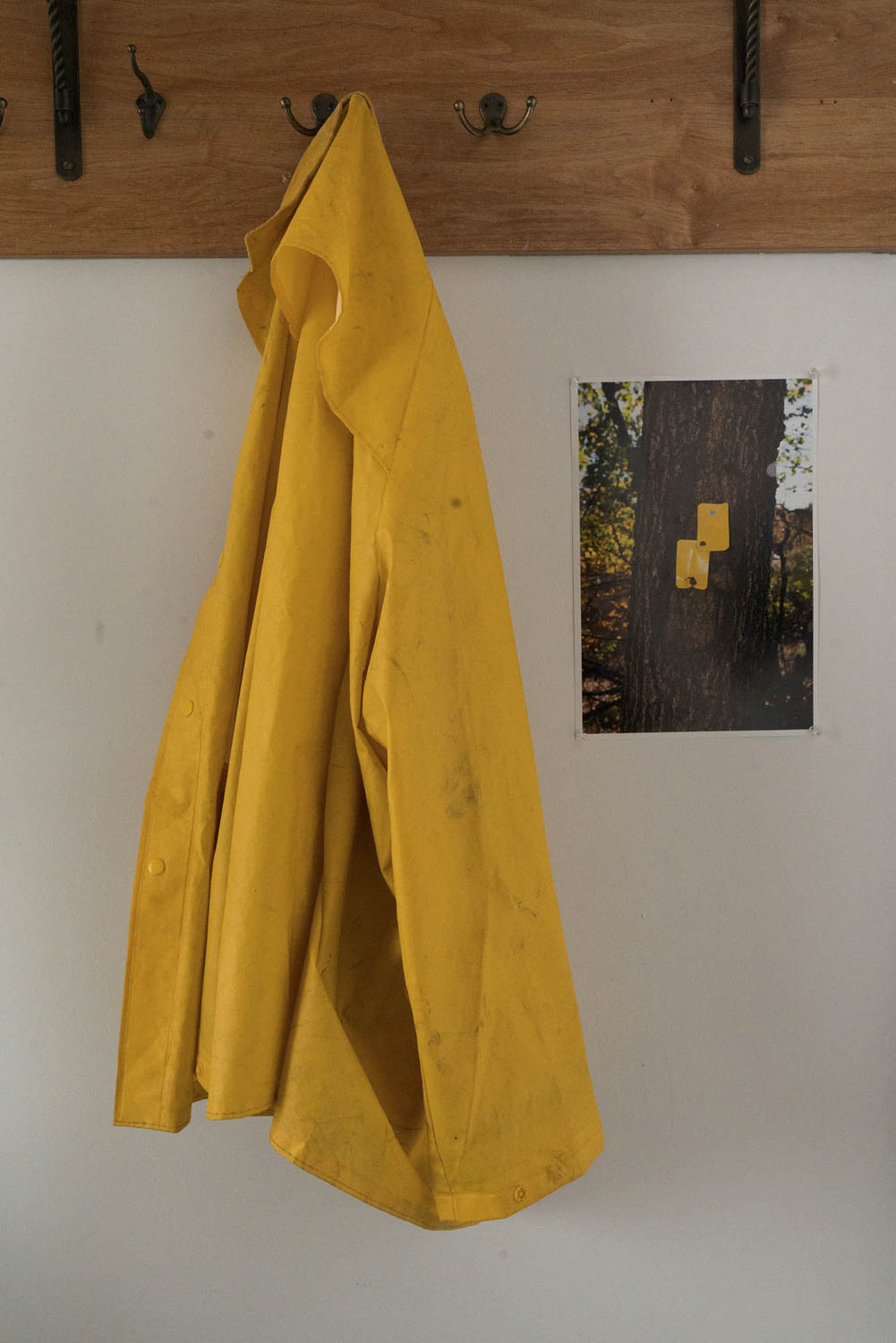



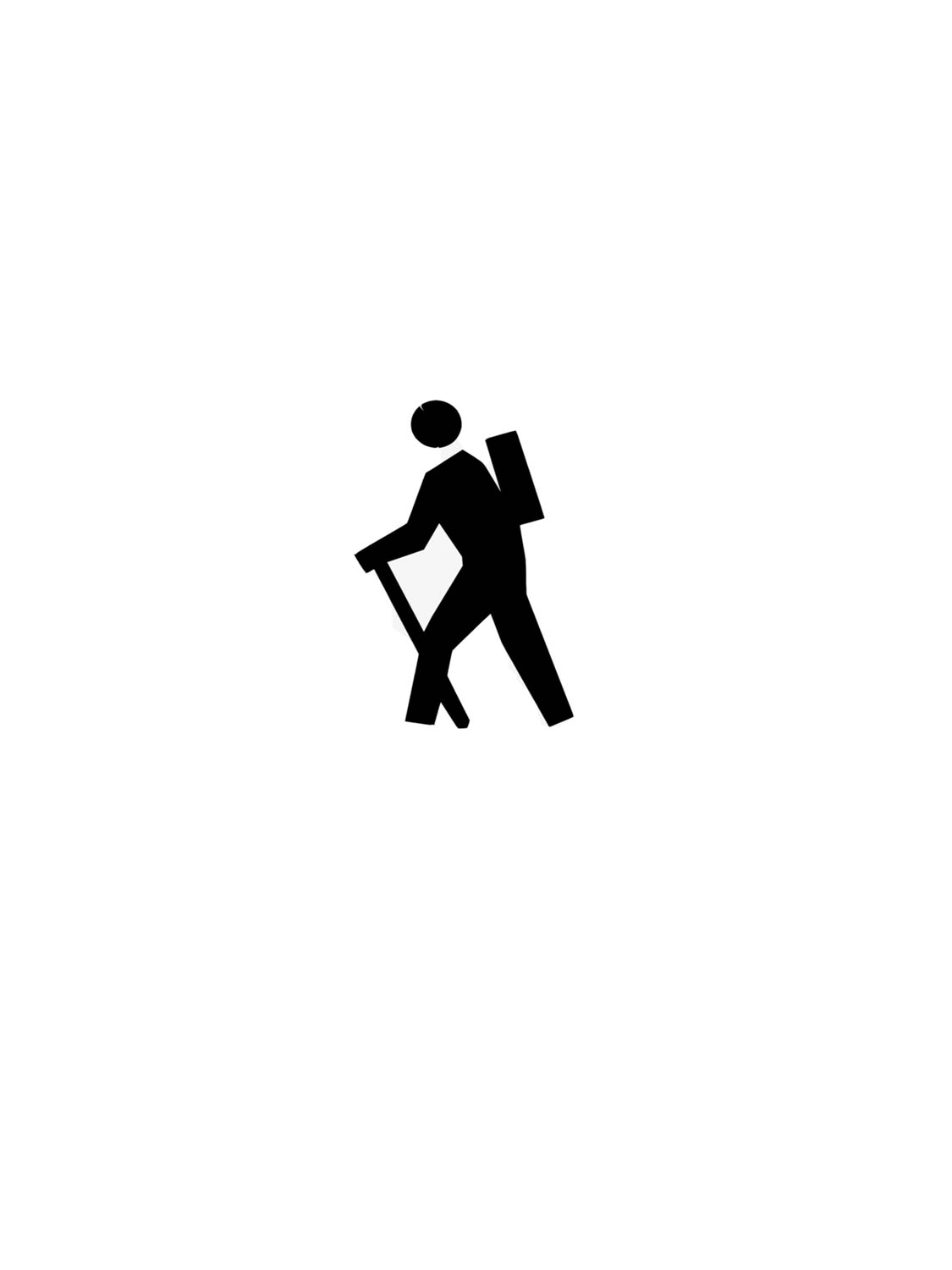
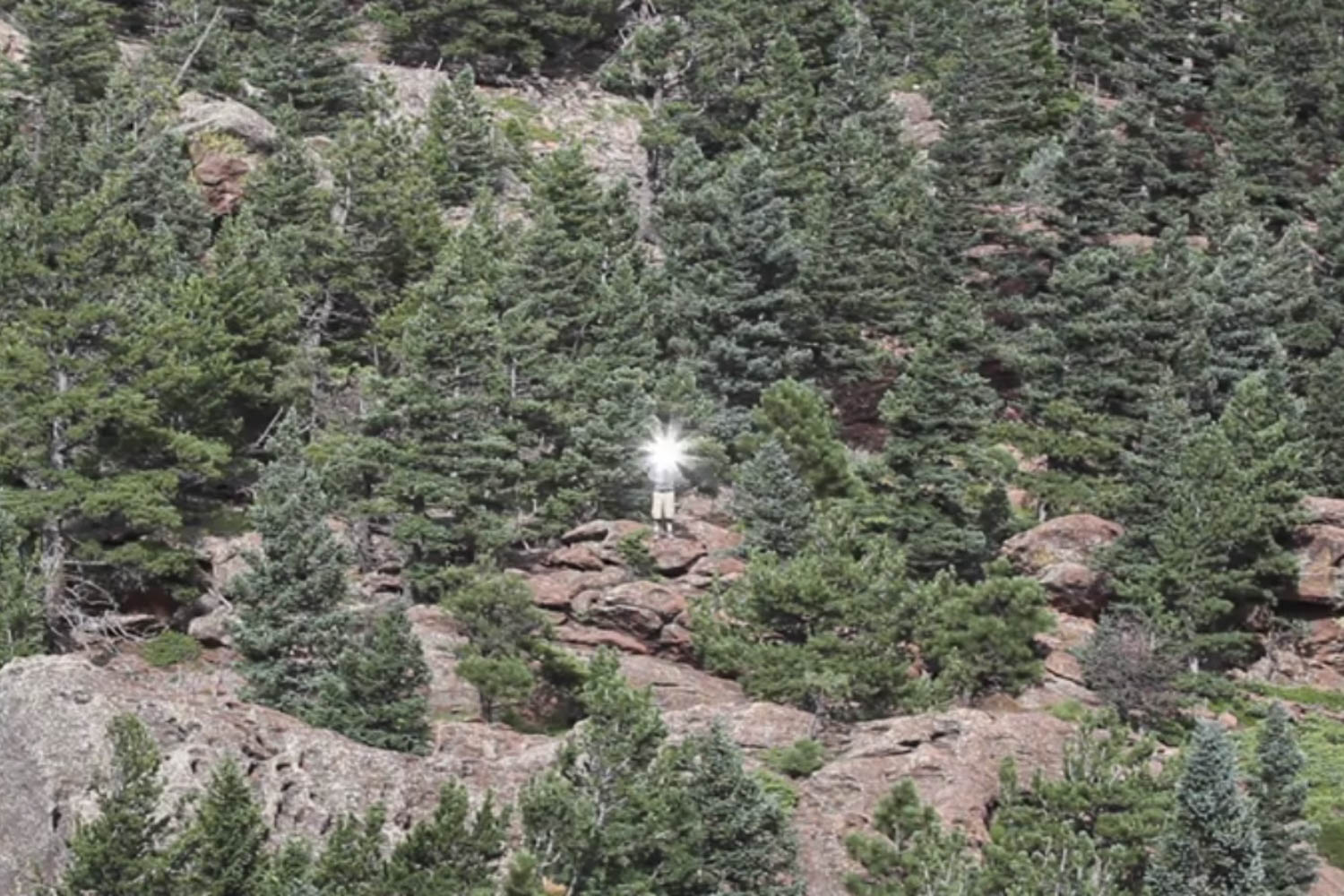

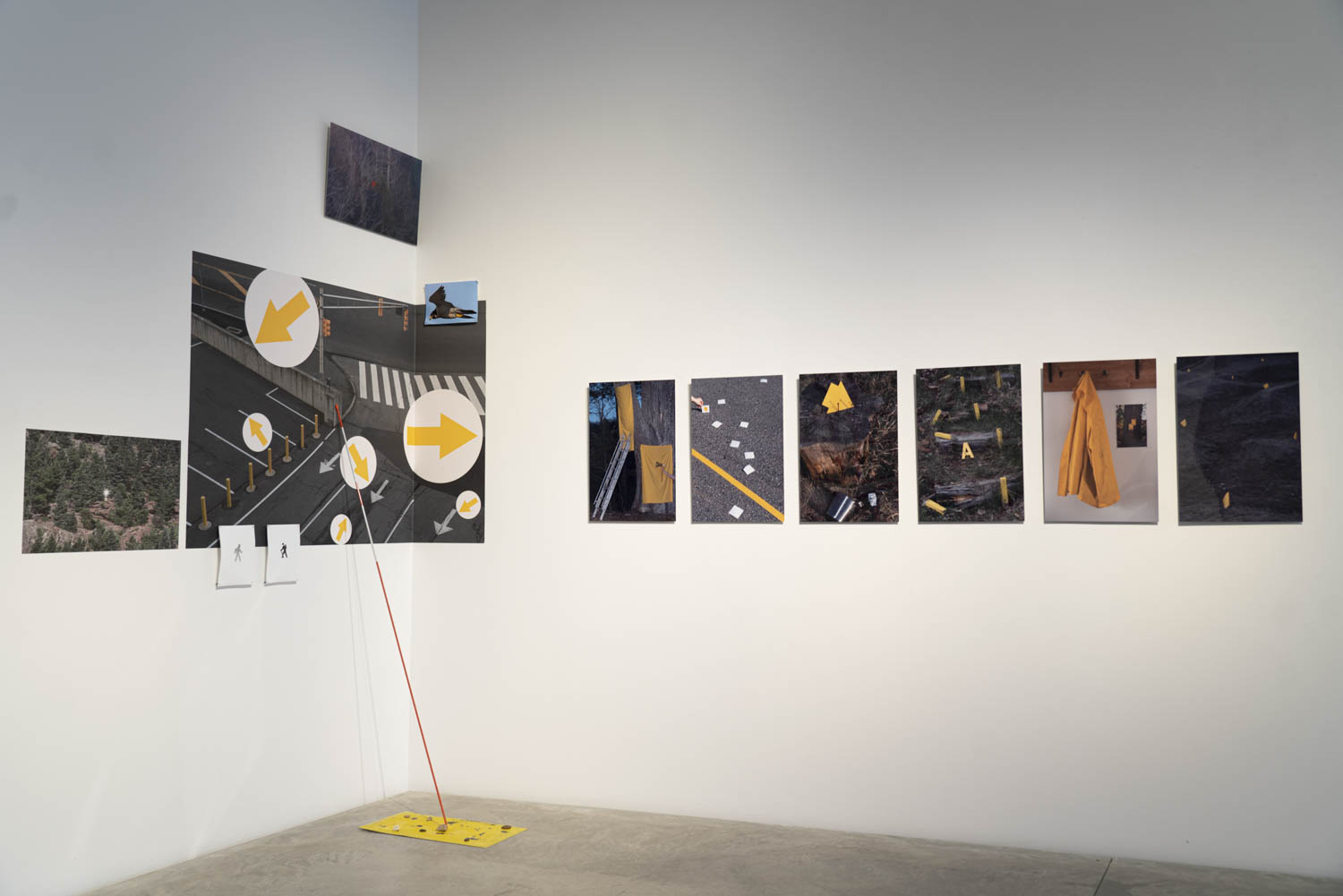
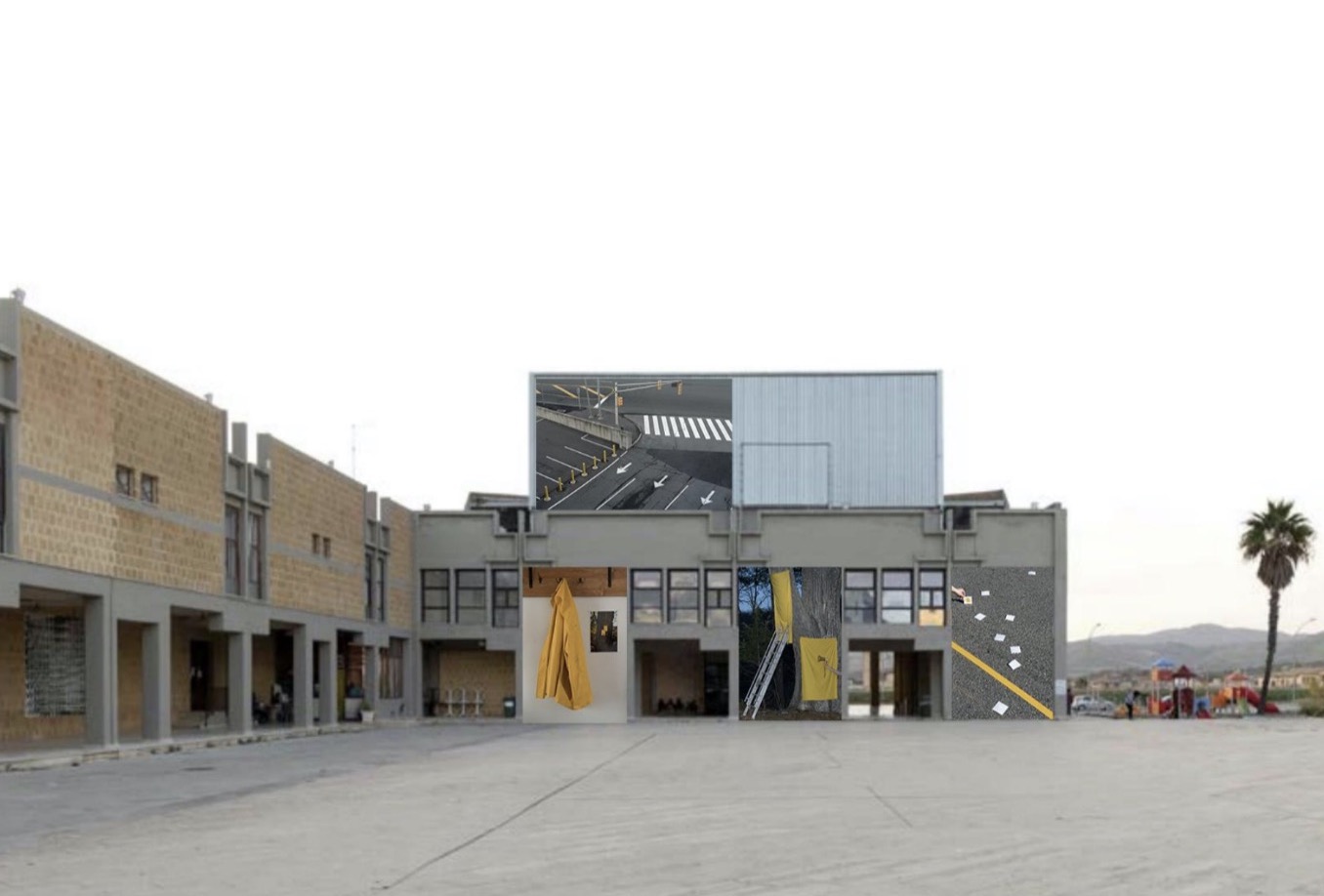

A Walk with Blaze
2019 - 2021HD metal prints, adhesive vinyl, aluminium sheet, spray paint, ink, stone, mixed media
In the summer of 2019, I hiked at Harriman-Bear Mountain State Park in New York with a group of people. Repeatedly walking by unknown markers with different patterns, forms and colors, I started to stop and get closer to observe them. Some markers were painted on the stones, some were nailed on the trees as a piece of metal. Some places were densely populated with them, some were spread out. Somewhere around a lake we finally got a chance to have a rest. I went back onto the trail and started to reengage with those markers in different ways: I ran past them at different speeds, recording the sound of my breathing and fleeting footsteps and the sound of the wind, made by me or nature itself--I could not really distinguish. Some days after I finally figured out they were called trail markers. That memory of my running past the markers had been circling around my mind for months, until I moved to a place in the middle of nowhere during the pandemic, and I had the opportunity to engage with them in a deeper way. At first I made arrow-shaped trail markers with paper, let them lie on the road, drift in the river and placed them on rocks and trees. Later on, I became a volunteer at New York New Jersey Trail Conference where I maintained Yellow Trail at Garret Mountain Reservation in New Jersey, nailing trail markers into the trees with hammers, cutting branches which blocked the trail with clips.
Guided by my practice of drifting and encounters with trail markers, I became interested in how the sign of a trail marker guides me to open up a new world of signs and language, both physically and virtually, across urban and natural spaces. Influenced by the Fluxus movement in the 1960s, I am also interested in creating interventions in different environments involved with my practice of aimless wanderings with/without prop and prompts.
“What does this part of landscape in New York and New Jersey mean to me?”, is also a question I am thinking about in this project. I like the story of an American man getting lost when he was exploring London because of the foggy weather, and he founded the Boy Scouts after he came back to the United States. I often think about how in Beijing several years ago, patients felt very confused about where they needed to go to see the doctor in a hospital because of less-considered spatial design, misguided signs, and markers in the interior space. Trail markers as a kind of both intervention and caretaking is something I would also like to construct in my homeland. Intrigued by the tension among form, color and sound in this project, I am thinking about a trail with directional markers as a metaphor of the psycholinguistic structure of “entry-body-exit” in our daily life.
Meandering Markers of Murmurs, 2021, dimension variable
archival pigment print, latex paint, branch, mixed media


